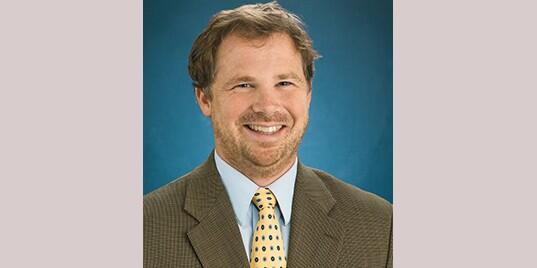Food insecurity is still widespread in America, study shows

Access to healthy food is a basic human need. Yet, one out of eight people in American is at risk for hunger, and the number is even greater for children.
Food insecurity, defined as limited access to adequate food, exists everywhere in the United States. Overall, 40 million people, or 12.5% of the U.S. population, are food insecure. But there is large regional variation in this rate, says Craig Gundersen, ACES distinguished professor of agricultural and consumer economics at the University of Illinois.
Gundersen works with Feeding America, a non-profit organization that operates a network of 200 food banks nationwide, on collecting data for the annual Map the Meal Gap study.
This year’s report, released on May 1, shows little change in food insecurity since 2018. Food insecurity rates increased during the recession in 2008 and have stayed high, in spite of the economy overall improving.
The report also shows that the highest concentrations of food insecurity are found in the South and in rural areas.
“Every county and every congressional district in the US has food insecurity, and there is enormous variation from the lowest level to the highest, “Gundersen says.
“This variation is much larger than among states. If you know a state’s food insecurity rate you know something [about the situation in that state], but what you really want to know is the county level to get a better picture,” he adds.
According to the report, food insecurity rates range from a low of 3% in Steele County, North Dakota, to a high of 36% in Jefferson County, Mississippi.
The South contains 45% of all U.S. counties, but 87% of counties with the highest food insecurity. And while rural counties make up 63% of all U.S. counties, they account for 78% of counties with food-insecurity rates in the top 10%.
“The determinants of food insecurity are multi-faceted,” Gundersen says. “What we find in our models is that high poverty rates, high unemployment rates, and low home ownership rates are some of the factors that enter into this, as well as variation in food prices regionally.”
Children are more likely than the general population to face hunger. Nationwide, one in six children is food insecure, with state levels ranging from 10% in North Dakota to 24% in New Mexico. Both children and adults who go hungry are at risk for serious health and behavioral complications.
Gundersen emphasizes that the federal Supplemental Nutrition Assistance Program (SNAP), formerly known as food stamps, works well in helping to alleviate hunger. SNAP has been criticized from both sides of the political spectrum, but Gundersen cautions against making any changes.
“The program has been shown to be enormously successful. Its main goal is to reduce food insecurity and it does so,” he says. “One reason it works is that it gives dignity and autonomy; it lets people make their own choices."
Gundersen has worked with Feeding America as lead researcher on the Map the Meal Gap reports for nine years. He has developed the data collection methods and models to estimate food insecurity rates that comprise the report.
Map the Meal Gap 2019 is available online. The report uses data from USDA, the Census Bureau, Bureau of Labor Statistics and food price data and analysis provided by Nielsen, a global measurement and data analytics company. The study is supported by The Howard G. Buffett Foundation, Conagra Brands Foundation and Nielsen.